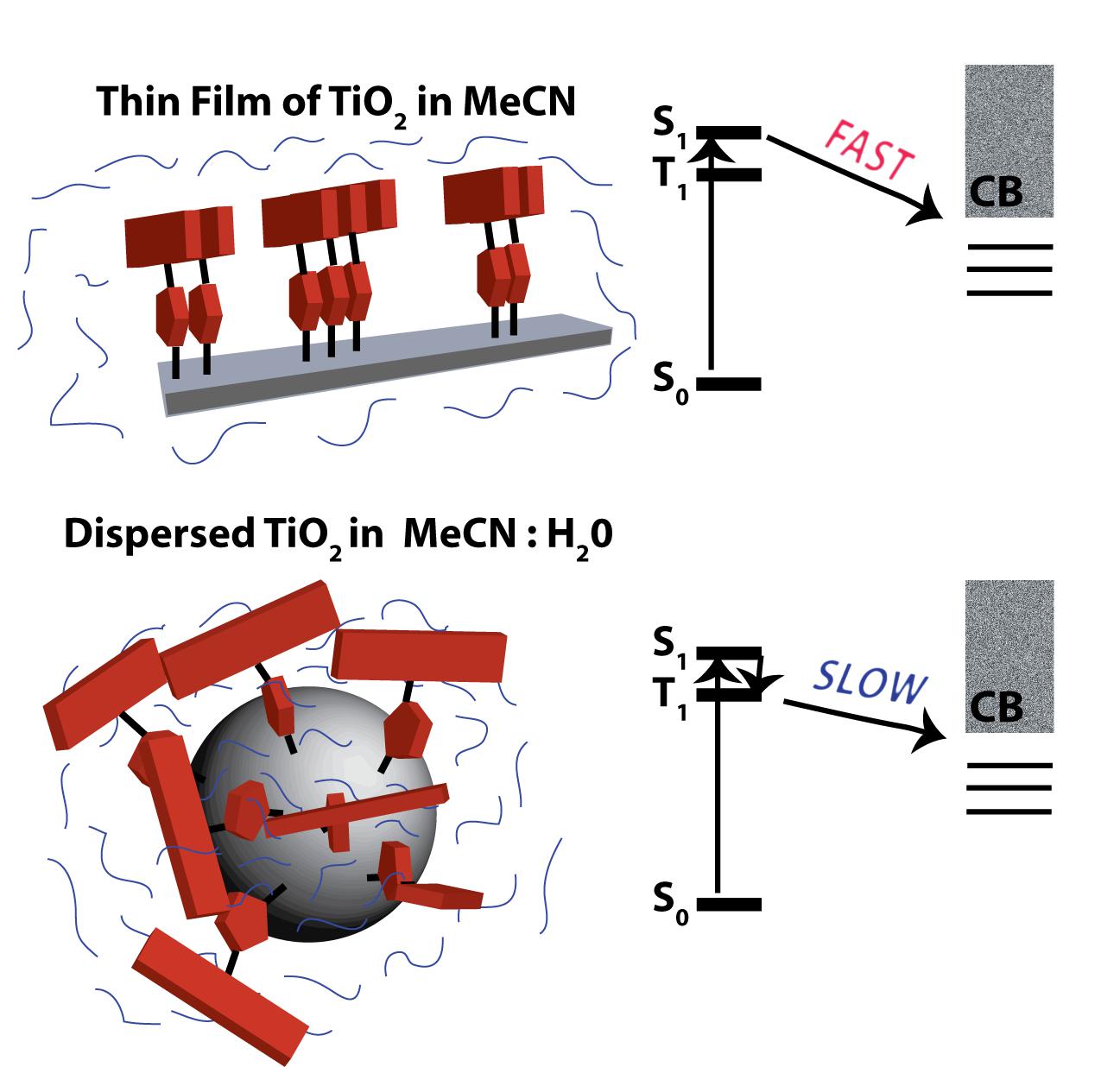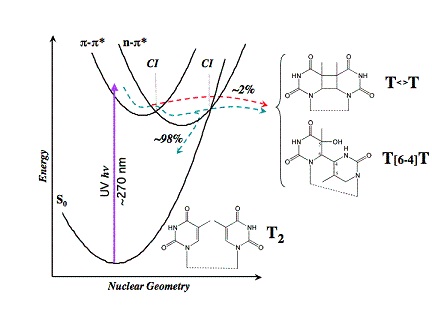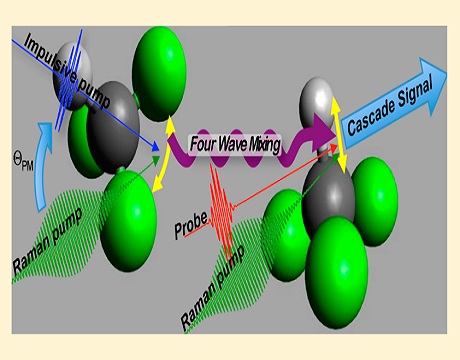Research
Overview
Research in the McCamant lab focuses on ultrafast structural dynamics in photochemistry and photobiology, and thereby illuminates how excited state structure is related to photochemical function. The innovative approach of this work lies in the application of ultrafast transient absorption, ultrafast Raman spectroscopy , steady-state methods and computational chemistry to these photochemical problems. By combining ultrafast electronic and vibrational spectroscopy, this research obtains a detailed picture of how molecular structure evolves during photochemical events and how energy flows between coupled molecular vibrations. Because vibrational spectra can be directly mapped to molecular structure, ultrafast time-resolved Raman can establish the excited-state structures that drive photochemistry and photobiology.
Solar Hydrogen Production
 This project involves making and characterizing components in solar hydrogen generating systems. As a laser lab, we can measure the ultrafast rates that affect system performance, providing intuition for optimizing efficiencies via synthetic modifications.
This project involves making and characterizing components in solar hydrogen generating systems. As a laser lab, we can measure the ultrafast rates that affect system performance, providing intuition for optimizing efficiencies via synthetic modifications.
DNA Photochemistry
 Absorption of ultraviolet (UV) light by the nucleic acids in DNA is one of the most important photo-activated processes that directly affects human health. Time-resolved electronic absorption and fluorescence measurements have established the ultrafast time-scale of excited state relaxation in the nucleic acid bases and several oligomers, but lack structural specificity. The mechanism of the extremely fast nonradiative decay of photoexcited nucleic acids is of interest because of its obvious relevance to the photo damage of DNA by UV light.
Absorption of ultraviolet (UV) light by the nucleic acids in DNA is one of the most important photo-activated processes that directly affects human health. Time-resolved electronic absorption and fluorescence measurements have established the ultrafast time-scale of excited state relaxation in the nucleic acid bases and several oligomers, but lack structural specificity. The mechanism of the extremely fast nonradiative decay of photoexcited nucleic acids is of interest because of its obvious relevance to the photo damage of DNA by UV light.
Anharmonic Vibrational Coupling
 The goal of this project is to observe vibrational coupling between the various vibrational modes of molecules in solution in order to determine the fundamental vibrational anharmonicities that drive vibrational relaxation. To do so, a Raman technique called 2D Femtosecond Stimulated Raman Spectroscopy (2D-FSRS) is being developed.
The goal of this project is to observe vibrational coupling between the various vibrational modes of molecules in solution in order to determine the fundamental vibrational anharmonicities that drive vibrational relaxation. To do so, a Raman technique called 2D Femtosecond Stimulated Raman Spectroscopy (2D-FSRS) is being developed.
